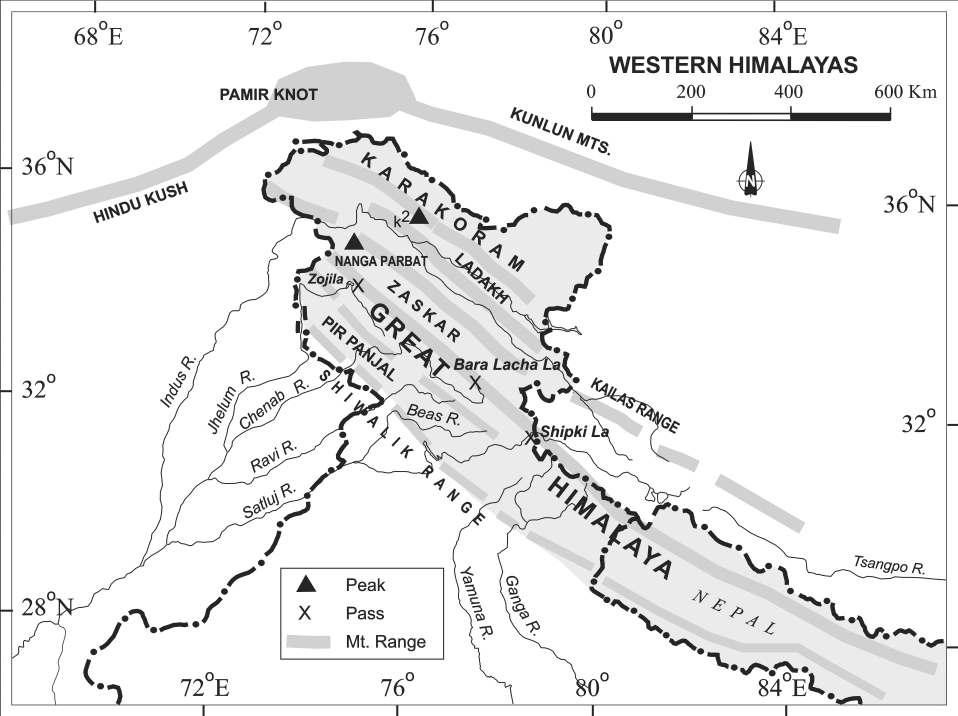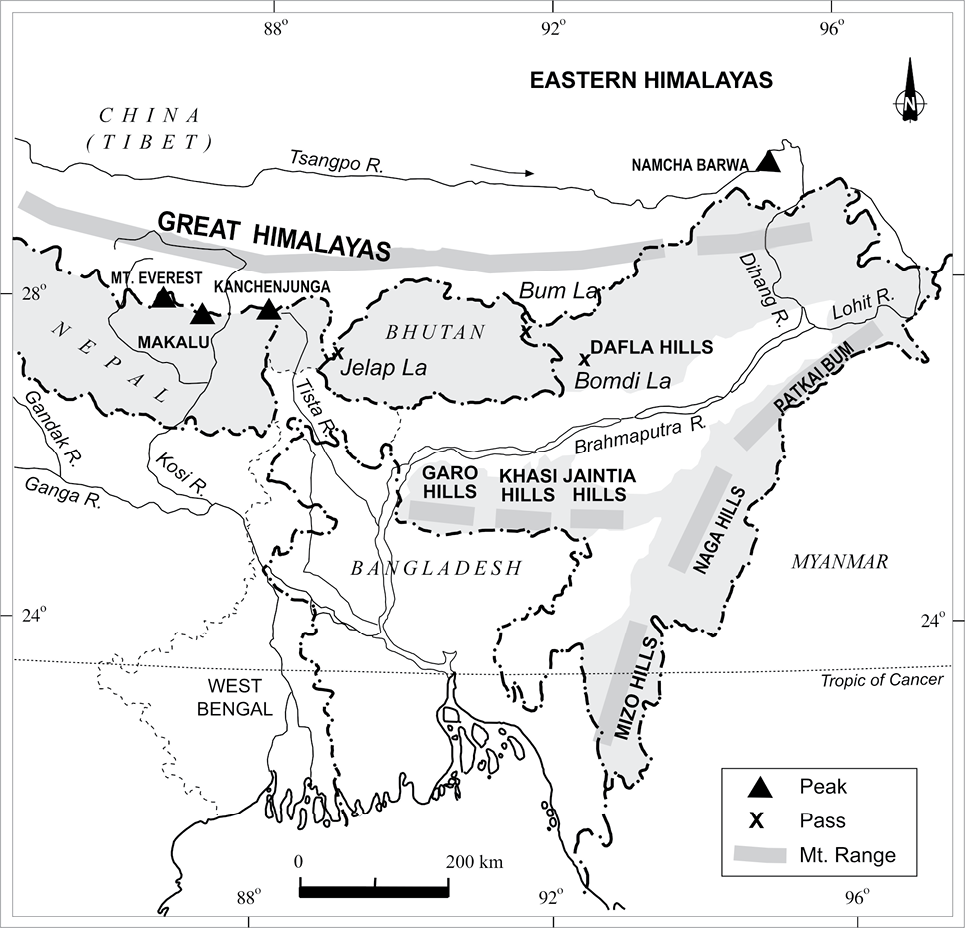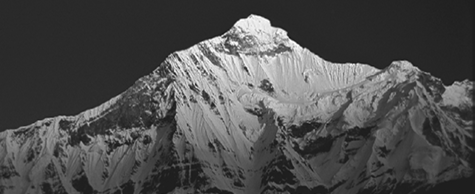The North and Northeastern Mountains consist of the Himalayas and the Northeastern hills.

The Himalayas consist of a series of parallel mountain ranges. Some of the important ranges are: -
(a) the Greater Himalayan range,
(b) the Middle / Himachal Himalayas and
(c) the Shiwalik.

The general orientation of these ranges is from west to the east direction on the northern border of India. Himalayas in the Darjiling and Sikkim regions lie in an east west direction, while in Arunachal Pradesh they are from southwest to the northwest direction. In Nagaland, Manipur and Mizoram, they are in the NorthSouth direction.
 The approximate length of the Great Himalayan range, also known as the central axial range, is 2,500 km from east to west, and their width varies between 160-400 km from north to south. It is also evident from the map that the Himalayas stand almost like a strong and long wall between the Indian subcontinent and the Central and East Asian countries.
The approximate length of the Great Himalayan range, also known as the central axial range, is 2,500 km from east to west, and their width varies between 160-400 km from north to south. It is also evident from the map that the Himalayas stand almost like a strong and long wall between the Indian subcontinent and the Central and East Asian countries.

You Can Also Visit...
Map of Indian Physical Divisions and ReliefPhysiographic divisions of India भारत के भौगोलिक खंड
The North and Northeastern Mountains उत्तर और उत्तरपूर्वी पर्वत
Regional Classification of the Himalayas हिमालय का प्रादेशिक वर्गीकरण
The Northern Plains उत्तरी मैदान
The Peninsular Plateau प्रायद्वीपीय पठार
The Indian Desert - Thar Desert भारतीय मरुस्थल - थार रेगिस्तान
The Coastal Plains तटीय मैदान
The Islands द्वीपसमूह